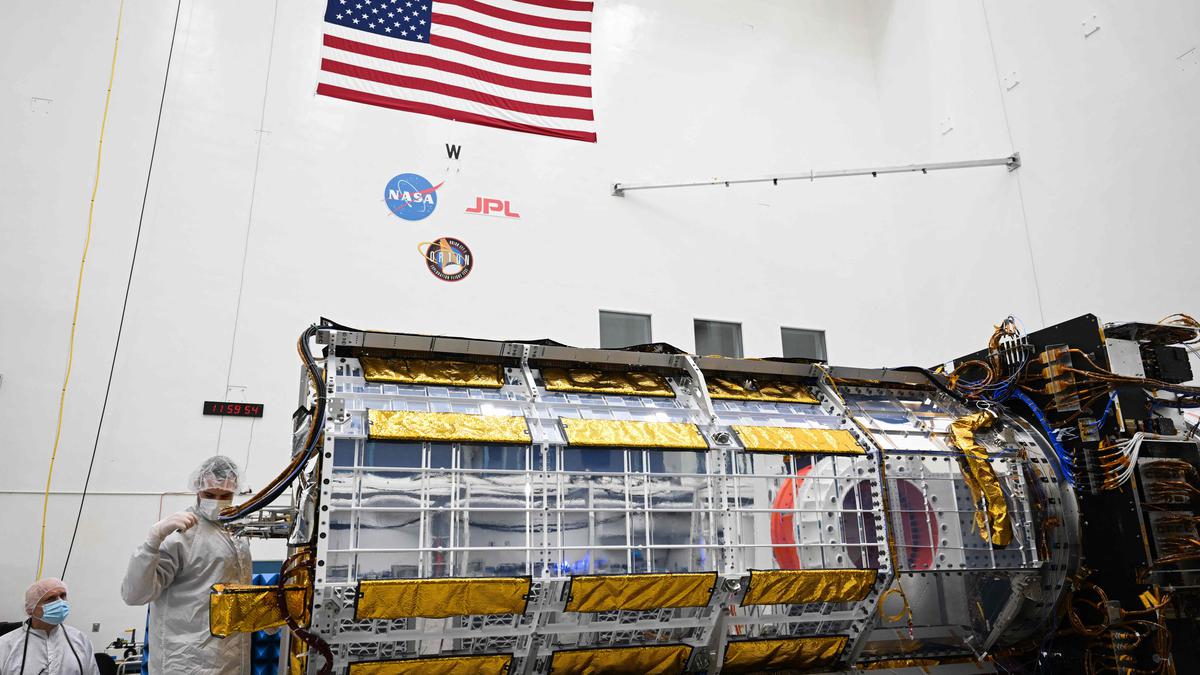News Highlight
ISRO-NASA built NISAR satellite ready to be shipped to India for launch.
Key Takeaway
- An earth-observation satellite jointly developed by NASA and ISRO that will help study Earth’s land and ice surfaces in greater detail.
- It is all set to be shipped to India later this month for a possible launch in September.
NISAR Mission
- About
- NASA and ISRO created NISAR under a collaboration agreement signed in 2014.
- It is scheduled to launch into a near-polar orbit from Satish Dhawan Space Centre in January 2024.
- The satellite will be operational for at least three years.
- It is an LEO (Low Earth Orbit) observatory.
- In 12 days, NISAR will map the entire globe.
- Objectives
- Monitoring subtle changes in the Earth’s surface.
- Detecting early warning indicators of impending volcanic eruptions.
- Assisting in the monitoring of groundwater supplies.
- Monitoring the melting pace of ice sheets.
Significance of NISAR Mission
- Human populations are growing in high-risk locations prone to sea-level rise, land subsidence, tsunamis, volcanoes, earthquakes, and landslides.
- Improved forecasting and mitigation require a better understanding of these natural hazards, which must be measured throughout the hazard cycle.
- Many natural disasters imperceptibly modify the land surface before to a catastrophic event.
- Tracking these small changes will better understand dangers like earthquakes, landslides, and volcanic eruptions.
- NISAR’s broad and rapid coverage will provide unprecedented disaster response opportunities.
- NISAR maps will also enable initial damage estimates to facilitate ground inspections for damage assessment following any natural disaster.
- Because NISAR’s data will be open access, more policymakers worldwide will be able to use them to achieve scientific, societal, and economic goals than would otherwise be possible.
Applications of NISAR
- Carbon emission
- The use of lower frequency bands will address the requirement for better characterisation of vegetation.
- Furthermore, it is critical for estimating global carbon stocks and monitoring carbon fluxes from vegetation.
- Geosciences
- Firstly, it will enable the investigation of complex processes ranging from ecological disruptions to ice sheet collapse.
- As well as it monitors natural hazards such as:
- Earthquakes
- Tsunamis
- Volcanoes
- Landslides.
- This is intended to boost the rapidly developing microwave remote sensing applications in geosciences.
- In addition, the mission’s accurate interferometric orbits will allow the mapping of land surface deformations to a few millimetres.
- Earth change
- Ecosystems (vegetation and the carbon cycle)
- Deformation (solid Earth studies)
- Cryosphere sciences (primarily as related to climatic drivers and effects on sea level)
- Coastal data
- NISAR will collect data along the Indian Coasts and track annual variations in bathymetry along deltaic regions.
- The shoreline and erosion accumulation will also be monitored.
- Sea monitoring
- The NISAR mission will monitor sea ice conditions surrounding India’s Antarctic outposts.
- Furthermore, it can be used to identify and broadcast the location of a marine oil leak to take precautionary steps.

Conclusion
- NISAR is a three-year mission that will launch from Satish Dhawan Space Centre in 2024.
- ISRO will employ NISAR for several applications, including agricultural mapping and monitoring Himalayan glaciers, landslide-prone areas, and coastal changes.
- ISRO will use the S-band radar for at least five years.
- NASA will require the L-band radar for worldwide science activities for at least three years.
- The data from NISAR can assist people worldwide in better managing natural resources and hazards.
- As well as providing scientists with data to help them better understand the effects and rate of climate change.
Pic Courtesy: The Hindu
Content Source: The Hindu



